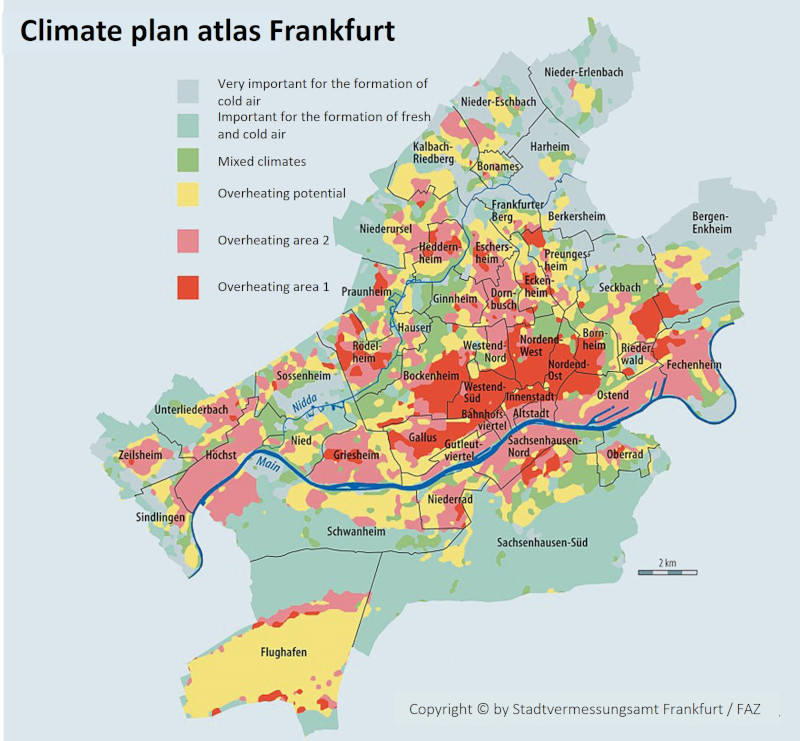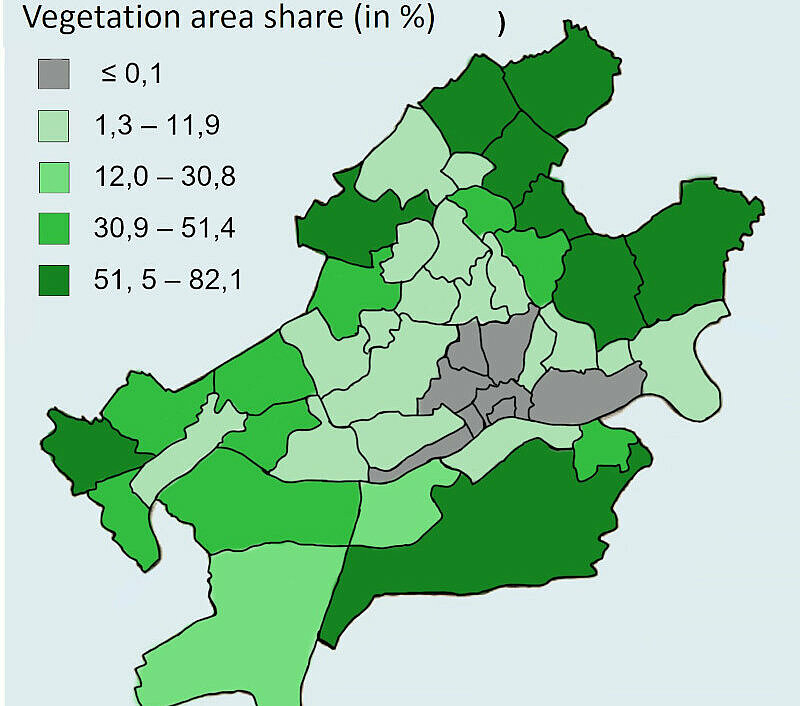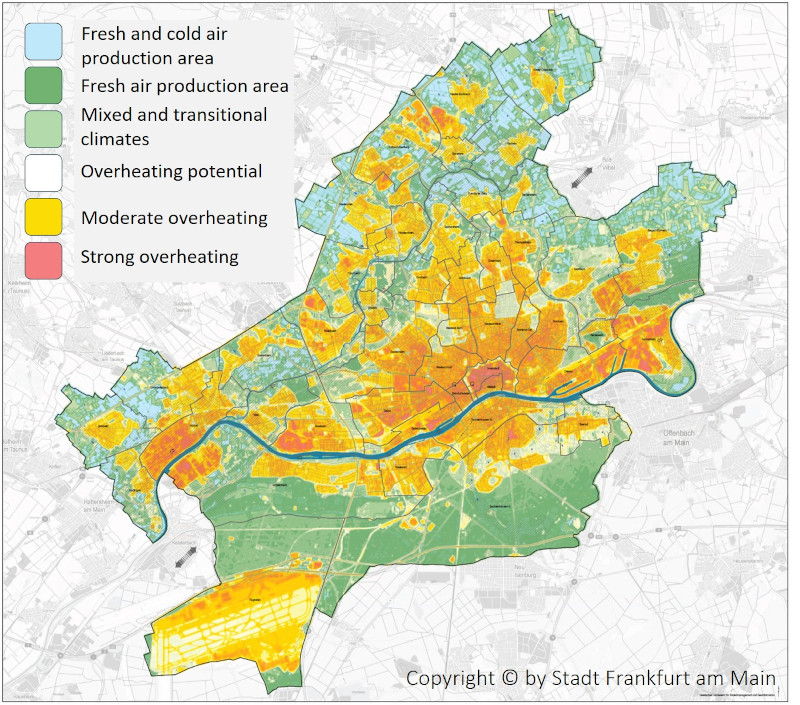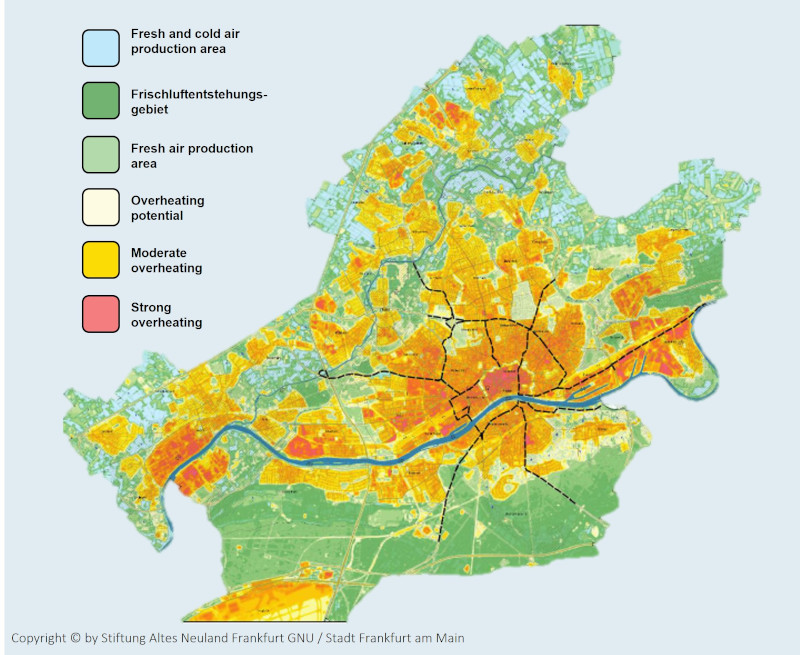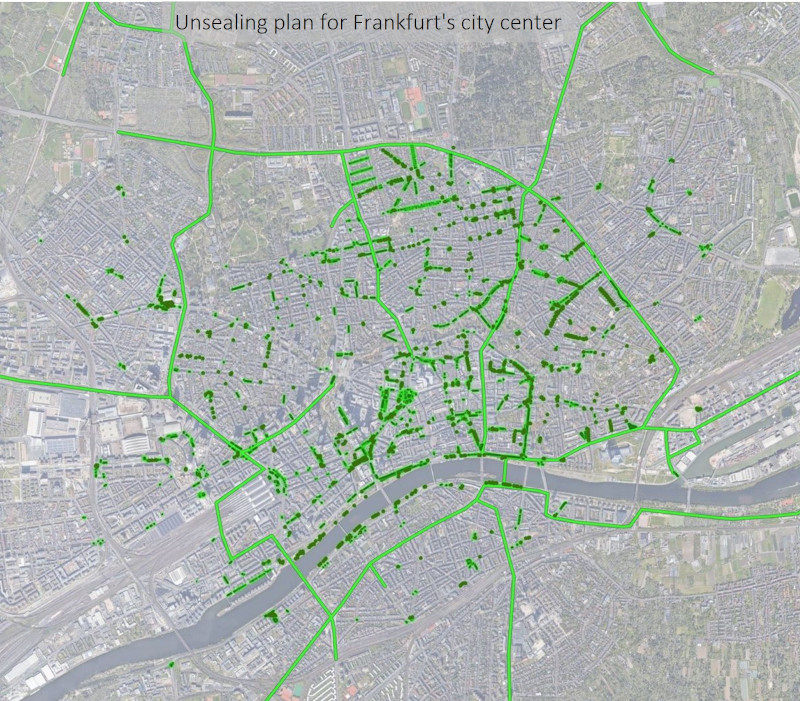Chapter content: The chapter provides an overview of climatic problem areas in the city of Frankfurt and the corresponding contribution of Frankfurt's bridges to solving them
It describes the factors that cause the problem zones, where they are located in the urban area and what measures can be taken to influence them.
One of the most important factors influencing the urban climate is the proportion of vegetation area in the total area of the city of Frankfurt.
The Frankfurt bridges can make an important contribution to the expansion of vegetation areas and the planting and supply of shade trees in the urban area by providing a network-like supply of water in the city.
Regarding the urban climate, however, attention must be paid to the selection and arrangement of trees in the urban area.


